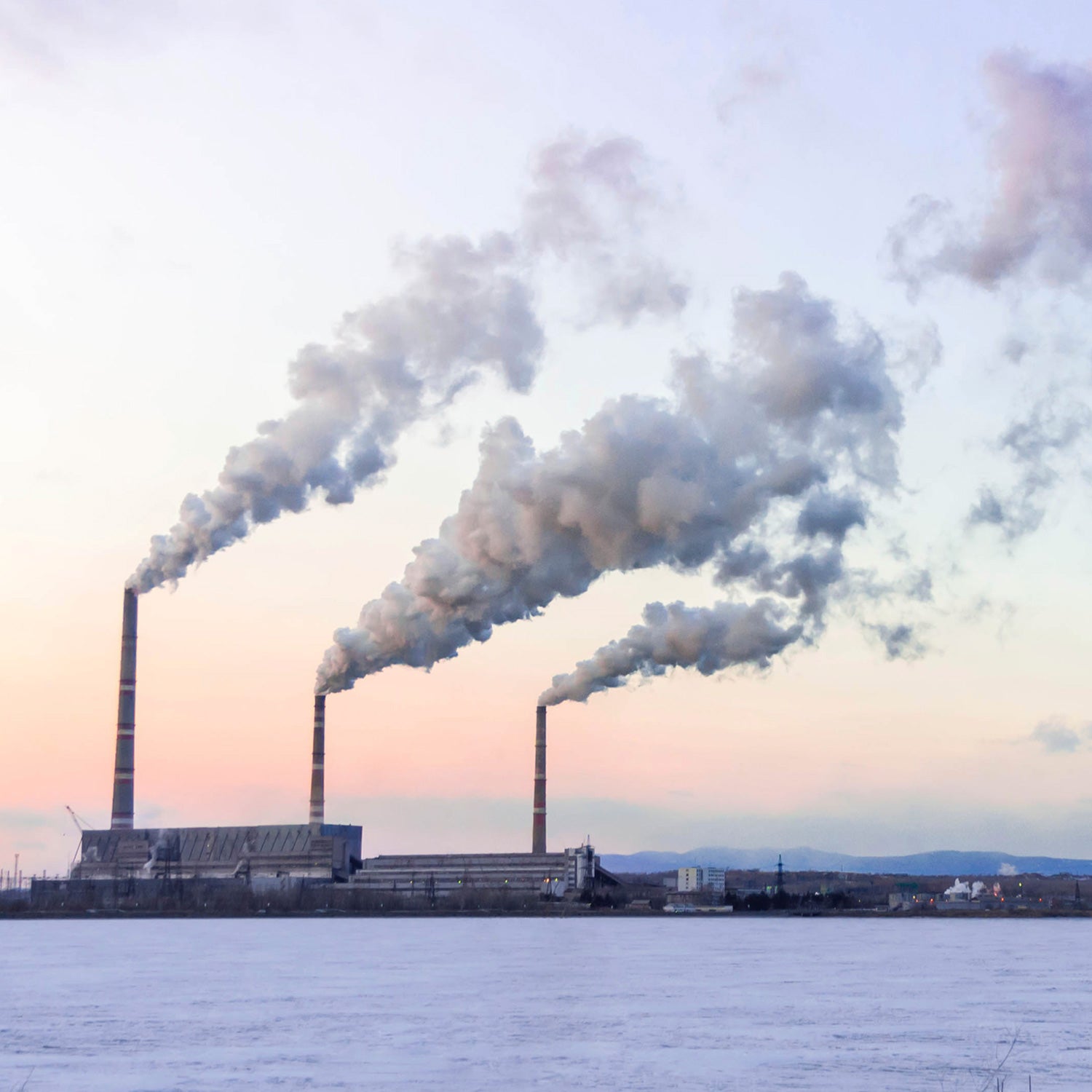Last week, the highest court in┬áMassachusetts┬á: it agreed with a lawsuit claiming the state was endangering young peopleÔÇÖs future by dragging its feet on climate change. The court, in backing the adolescent plaintiffs, ordered the stateÔÇÖs┬áDepartment of Environmental Protection to promptly issue regulations that will reduce┬ágreenhouse gas emissions.
The victory might seem a fluke or┬áan outlier. Except it wasnÔÇÖt. Three weeks before, a judge in Washington ┬áto take similar action in response to a lawsuit filed there by another group of young plaintiffs. In doing so, the court became ÔÇťthe first court in America to order an agency to regulate carbon┬ádioxide emissions,ÔÇŁ says Andrea Rodgers, attorney for the group.
These coordinated lawsuits had more in common than a sprinkling of acne. They both invoked something called the public trust doctrine. Remember that phrase. According to environmental attorneys, interest in the public trust is on the rise as environmentalists cast about for ways to do an end run around a system that many view today as either too clogged, too co-opted, or too corroded to protect the natural world for future generations. The doctrine could be coming soon to an environmental conflict near you.
ÔÇťWeÔÇÖre asking them to apply ancient law to a modern issue.ÔÇŁ
Public trust is a pretty simple idea: just as a financial trust has a sworn duty to protect a pot of money for the use of a beneficiary, the public trust is the governmentÔÇÖs obligation to protect, preserve, and regulate the assets we all own together, both now and into the future. The idea is . Sixth-century Roman laws called the Institutes of Justinian declared, ÔÇťBy the law of nature, these things are common to mankindÔÇöthe air, running water, the sea, and consequently the shores of the sea.ÔÇŁ Since then, the doctrine has become established precedent in modern legal systems around the worldÔÇöincluding India, South Africa, and the PhilippinesÔÇöand the trust principle is reflected in . It holds that some things belong to all of us, even to our yet-unborn grandkids. And the pact we make with our government when we give it power is that it wonÔÇÖt take these things from us, but instead will care for them for eternity.
After the founding of the United States, judges adopted many principles, including the public trust, from English law into American case law, says Mary Christina Wood, faculty director of the Environmental and Natural Resources Law Program at the University of Oregon School of Law. Another scholar has said that public trust is the slate upon which the Constitution is written. Another has opined that the public trust is what separates a country of citizens from one of serfs.
Yet for a long time, the public trust stayed in the background of jurisprudence, surfacing mostly in issues┬áabout wildlife management and public access to beaches or waterways. The role the doctrine will play in the 21st century, and whether it will live up to environmentalistsÔÇÖ hopes, remains to be seen. In addition to the cases in Massachusetts and Washington, more than a dozen others have been tried at the state level,┬áwhere theyÔÇÖve met with varying success. Meanwhile, a judge in Oregon┬ámay soon give the green light for┬áa federal case invoking┬áthe doctrine to move forward. If that lawsuit goes to trial, it could represent a landmark moment in the battle against climate change.
ÔÇťWhen environmental statutes were passed in the 1970sÔÇŁÔÇöthe Clean Air Act, the Clean Water Act, the Endangered Species Act, the National Environmental Policy ActÔÇöÔÇťeveryone thought that the battle was done,ÔÇŁ says Wood. ÔÇťBut over time, the statutory schemes have proved to be an abysmal failure.ÔÇŁ The agencies have become ÔÇťcapturedÔÇŁ by corporate interests, she and others argue. According to Wood, the Bush administrationÔÇÖs refusal to regulate carbon dioxide emissions even when it knew about the dangers of climate change is a perfect example.
The public trust is the governmentÔÇÖs obligation to protect, preserve, and regulate the assets that we all own together, both now and into the future.
In 2008, Wood unveiled a novel strategy for climate activists to┬áuse the public trust as a legal tool. She called it ÔÇťatmospheric trust litigationÔÇŁ and began giving dozens of talks about it. Prior to that, the public trust doctrine, when invoked in court at all, usually was seen through the lens of wildlife and access issues. Wood argued that the public trust doesnÔÇÖt end at the earth and water, but also includes the atmosphere. And since the government is required to preserve resources for posterityÔÇötodayÔÇÖs youth┬áand subsequent generationsÔÇöit should be legally required to reduce greenhouse gas emissions to ensure a healthful and pleasant environment in the future.
In 2011, environmental attorney Julia Olson formed the Eugene, OregonÔÇôbased nonprofit ┬áto coordinate with and support law firms that, working pro bono, have filed a flurry of lawsuits based on WoodÔÇÖs ideas. In all, there have been 18 state and federal climate-change cases with adolescents as plaintiffs. The cases all claim breach of the public trust and try to force states to implement plans for emissions reductions based on science. ÔÇťTheyÔÇÖre all alleging that their futures are imperiled and that [governments are] violating their public trust rights because government continues to promote the fossil fuels regime that is destroying the climate they need for their survival,ÔÇŁ says Wood.
The recent rulings in Massachusetts and Washington are the first big two victories for the young people. Lawsuits are ongoing in Oregon, Colorado, North Carolina, and Pennsylvania, as well as in Uganda, Ukraine, the Philippines, and Pakistan. The group says it is working to file more cases elsewhere.
The cases filed by Our ChildrenÔÇÖs Trust arenÔÇÖt alone in invoking public trust. In late 2013, the┬áPennsylvania┬áSupreme Court decided a case known as Robinson Township. It eventually ruled that several provisions of a law meant to regulate and facilitate fracking violated an amendment in the state constitution that gives citizens a right to clean air, pure water, and conservation of natural resources.
The decision marked the first time the stateÔÇÖs so-called environmental rights amendment had ever been invoked to find a law unconstitutional, says John Dernbach, a┬ádistinguished professor of law and director of the at Widener University Commonwealth Law School. It is now widely discussed among environmental attorneys, says Dernbach. Even if a state doesnÔÇÖt have a law like PennsylvaniaÔÇÖs, Robinson Township can still be influential, he says, an idea known as ÔÇťpersuasive precedent.ÔÇŁ
The doctrine has cropped up elsewhere, too. In California last November, environmentalists to stop the state from allowing what they called ÔÇťexcessiveÔÇŁ sand mining in San Francisco Bay. In 2014, the┬áHawaii┬áSupreme Court ruled that a company bottling springwater on the island of Kauai , basing its ruling on the stateÔÇÖs public trust doctrine, according to the Associated Press. Opponents of a proposed oil terminal on the Pacific Northwest coast are also invoking the doctrine.
ÔÇťI expect to see more and more use of the public trust in litigation.ÔÇŁ
Endangered wildlife may also benefit from the strategy. The public trust doctrine is already being invoked, implicitly and explicitly, in cases related to protecting wolverines in the West and wolves in the upper Midwest, says Adrian Treves, an associate professor at the at the University of WisconsinÔÇôMadison. While the government has long shown a public trust role in managing wildlifeÔÇöthink bag limits and hunting seasonsÔÇöit has been inconsistent about which animals it protects. For example, while many state agencies guard assets they deem valuable, such as elk, they have frequently ignored or deferred responsibility for the welfare of less popular species like prairie dogs. ÔÇťThose wildlife assets are just as much of the public trust as the ungulates,ÔÇŁ says Treves. ÔÇťI expect to see more and more use of the public trust in litigation.ÔÇŁ
For all this optimism surrounding the doctrine, observers remain skeptical. ÔÇťI think it does have to be tempered with some realism,ÔÇŁ says Richard Frank, a professor of environmental practice at UC┬áDavis School of Law. Frank cited the recent wave of atmospheric trust lawsuits. ÔÇťThere are a number of hurdles and obstacles to applying the public trust doctrine in that context. Most of those suits were not successful.ÔÇŁ Indeed, among the lawsuits orchestrated by Our ChildrenÔÇÖs Trust in recent years, two statesÔÇöIowa and MinnesotaÔÇödeclined to extend the public trust doctrine to the atmosphere. Several other cases were dismissed on jurisdictional grounds. ┬áThe U.S. Court of Appeals for the District of Columbia dismissed the first federal court case brought by young people in 2014, concluding there was no federal jurisdiction because the public trust was a matter of state, not federal, law. Early defeats were expected, says Olson. ÔÇťItÔÇÖs a novel factual issue, and weÔÇÖre asking them to apply ancient law to a modern issue.ÔÇŁ
But precedent cuts both ways, Frank cautions. Just as a court victory in one state can positively influence other states, losses can have the opposite effect.
Perhaps the most interesting test of the doctrineÔÇÖs reach and how it might be applied is a ┬áon behalf of 21 young people and climate scientist James Hansen in U.S. District Court in Oregon. As soon as next month, a federal judge will rule whether to let the young plaintiffsÔÇÖ case proceed against President Obama and several federal agencies. In addition to claiming injuries to the youthsÔÇÖ constitutional rights, the lawsuit alleges that for a half-century, the federal government knowingly abetted the deterioration of the atmosphere it is responsible for protecting. In breaching this public trust, the government┬áhas injured todayÔÇÖs youth┬áand tomorrowÔÇÖs. The lawsuit demands a national plan that will┬áreduce greenhouse gas emissions to a level scientists have recommended. The United States still has no such overarching plan.
How effective that novel argument would be is far from clear. Privately, one scholar expressed doubt that such a case could prevail. Still, itÔÇÖs very existence would give beleaguered climate activists something to cheer about.
ÔÇťIt would be,ÔÇŁ says Olson, ÔÇťthe trial of the century.ÔÇŁ


